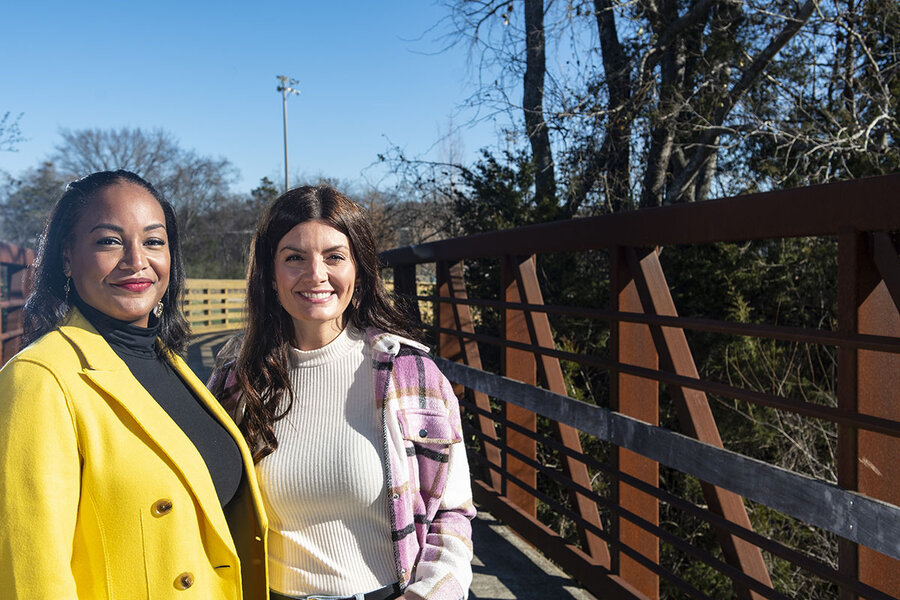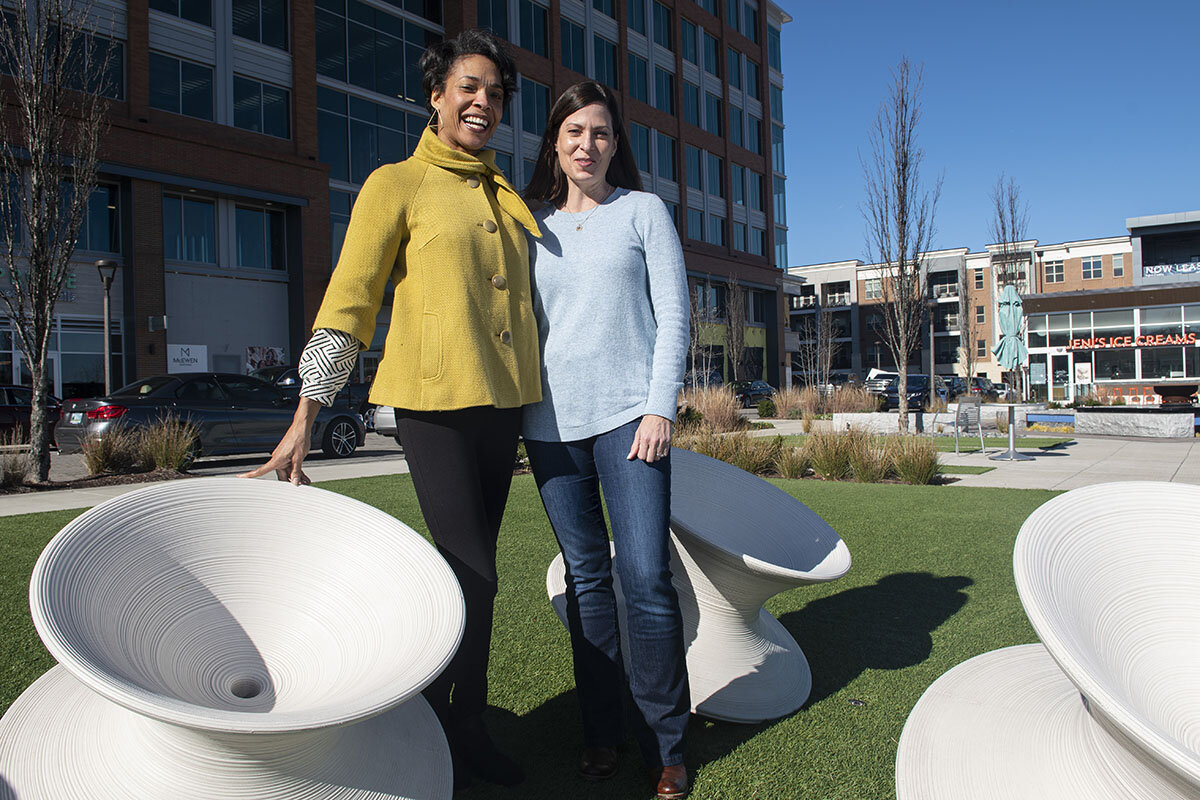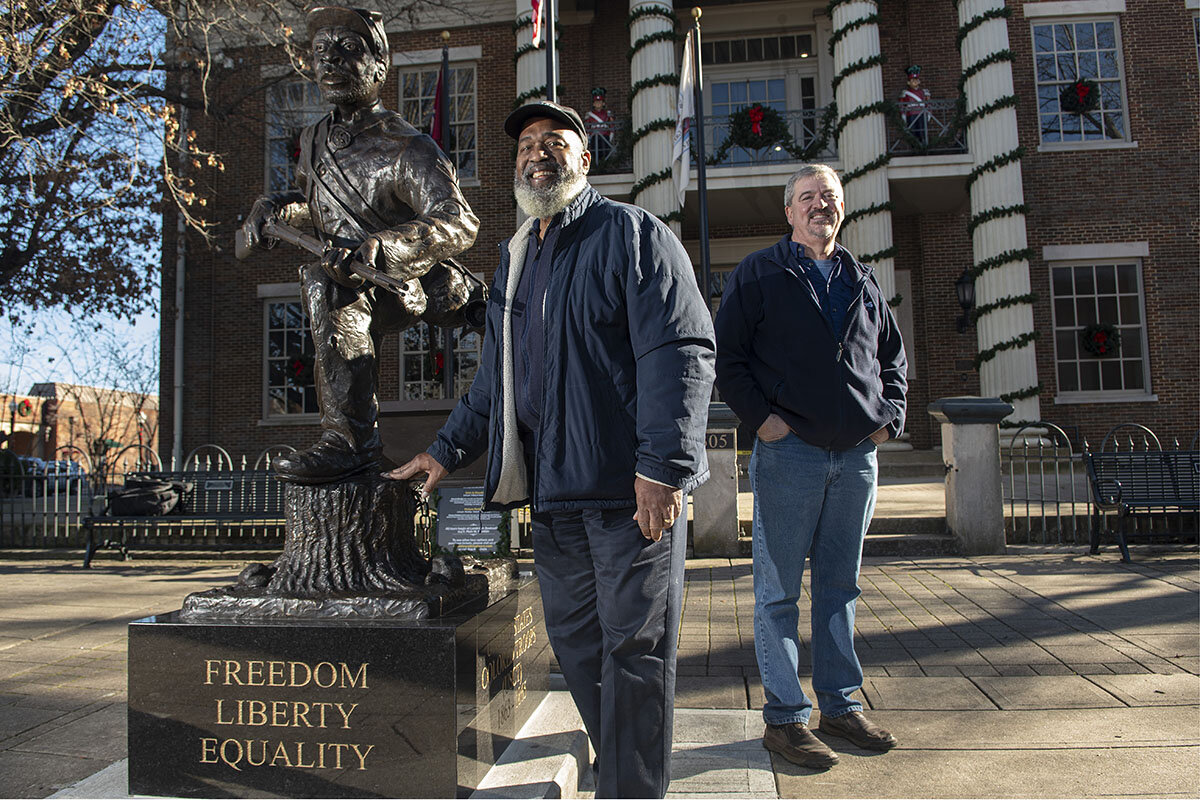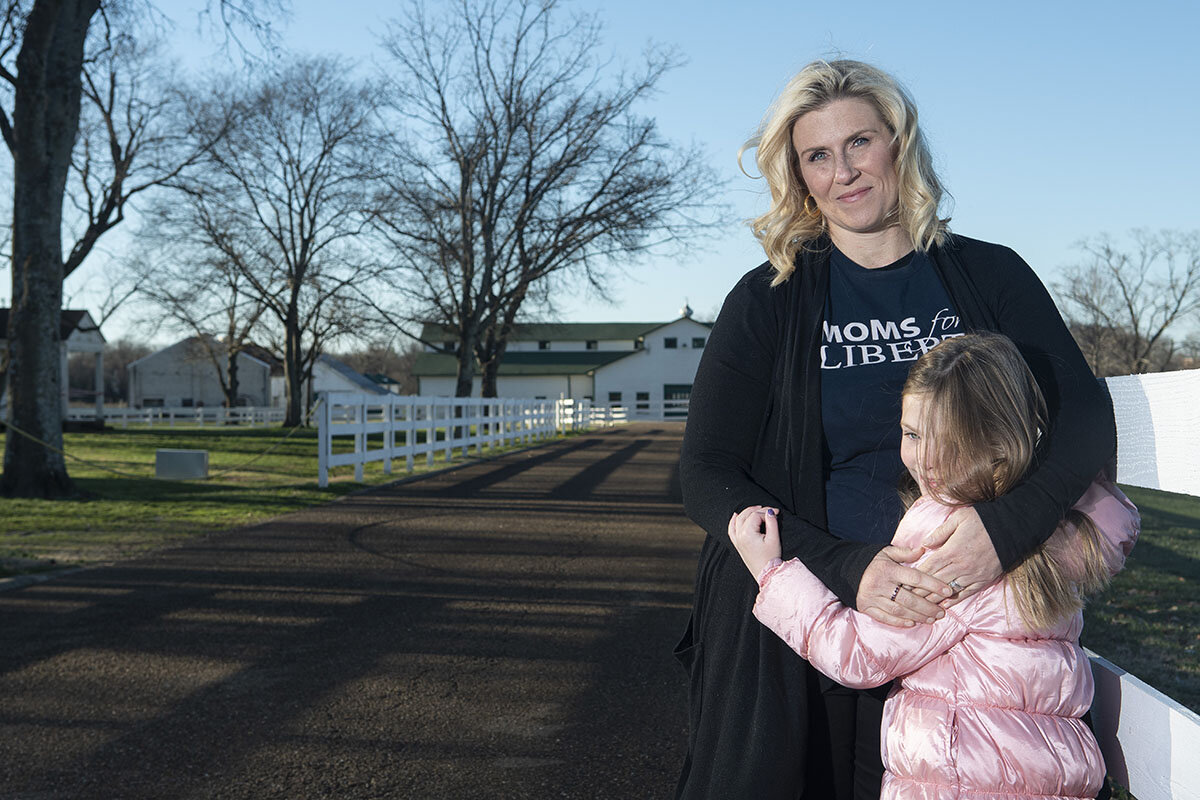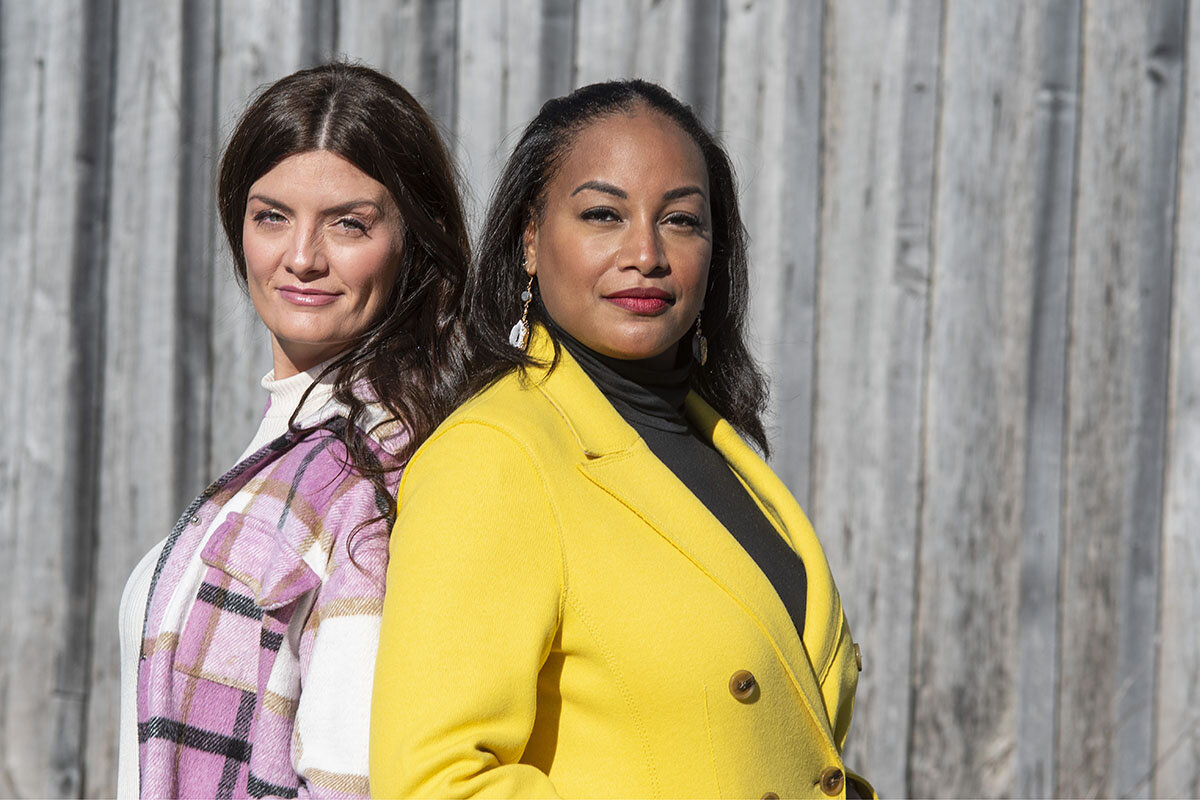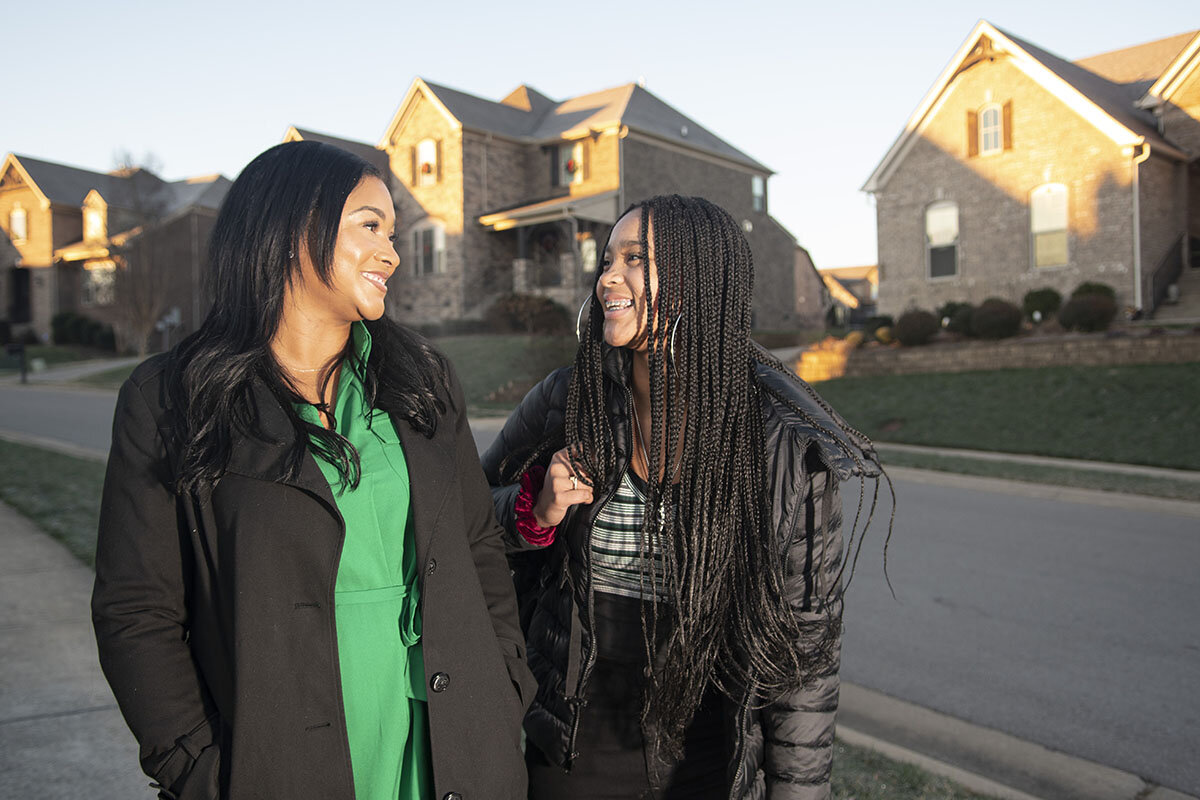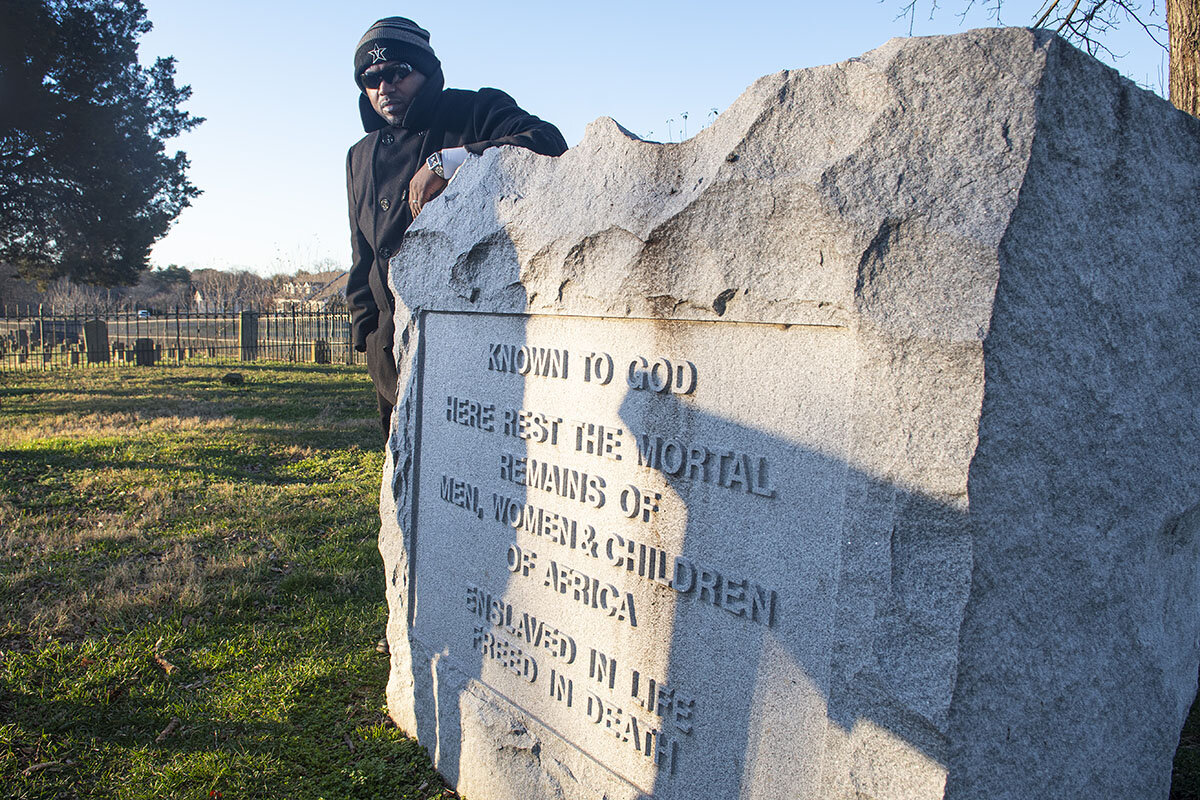Teaching race in schools: Have these moms found a way forward?
Loading...
| Franklin and Nolensville, Tenn.
Affluent. Good schools. A Confederate monument. A diversifying community.
This is Williamson County, just south of Nashville, one of the nation’s flashpoints over how race is taught and talked about in schools. On the surface, there are strict laws on the matter coming down from the state legislature, and fraught school board meetings.
Why We Wrote This
In a town roiled by teaching about race in public schools, some people are quietly fostering reconciliation through a simple idea: sitting down and getting to know each other.
But beneath the turmoil are people from diverse backgrounds trying to talk to each other about one of the most sensitive topics in America. Some would love to convince others of their convictions, and win them over to their “side.” But other groups are simply trying to understand each other’s views and cultivate a better sense of community.
“We’re learning from each other,” says Audrey McAdams, a Black mother of three. At the urging of Amie Cooke, a white acquaintance from her daughter’s day care, the two started leading a conversation group centered around diverse opinions on and experiences with race.
“It’s life-changing,” says Ms. Cooke.
Robin Steenman, of the local Moms for Liberty chapter, has whipped up opposition to public school curricula concerning race. Still, she sees a benefit in dialogue with neighbors who disagree.
“I don’t need an echo chamber,” says Ms. Steenman. “The best possible outcome is you convince him to come over to your way of thinking, but if we’re somewhere in the middle, that’s still a great thing.”
Amie Cooke picked up her favorite coffee on her way to work and took a deep breath before pulling over to call Audrey McAdams, an acquaintance from her daughter’s day care.
Ms. Cooke, a white mother of three, felt a little anxious about asking Ms. McAdams, a Black mother who also has three children, to join her in forming a group to talk about one of America’s most sensitive topics – race. Specifically, she wanted to bring different people together to discuss racial reconciliation in their small town of Nolensville, Tennessee, where, like many communities across the country, tensions lurk beneath the surface and sometimes above.
It was the summer of 2020, soon after the death of George Floyd in police custody in Minneapolis, and Ms. Cooke was struck by a quote circulating on social media about how staying silent on the issue of racism wasn’t enough. She remembered hearing about Be the Bridge, a national Christian nonprofit that brings people together for healing conversations on race, a few years earlier. She searched for a local chapter and found none. So she asked herself: Do I have the confidence to find a co-leader and start a group?
Why We Wrote This
In a town roiled by teaching about race in public schools, some people are quietly fostering reconciliation through a simple idea: sitting down and getting to know each other.
“I was honestly not wanting to be a leader; I just wanted to join,” recalls Ms. Cooke. “But I realized this is it; I’ve got to do it.” She’d always hit it off with Ms. McAdams at school events and their daughters were friends, so she pulled up her contact list and sent a text message asking to talk.
Ms. McAdams, chatting between work meetings, greeted the idea with enthusiasm. “I was like, ‘Oh my gosh, wow,’ this is a way to continue the conversation with people I don’t know,” says Ms. McAdams. “I wanted to make sure it wasn’t just going to be a social thing, but something I could get behind and be passionate about and would make an impact.”
Ms. Cooke and Ms. McAdams still lead weekly gatherings of a group of women in Nolensville who are Black, white, and Hispanic and who want to learn about how race affects their lives and how to best treat others. They are one of a number of groups in Williamson County, Tennessee, that are trying to bridge divides between people of different backgrounds at a time of deepening rancor over race and history – particularly how the two are taught in public schools.
Williamson County, one of Tennessee’s wealthiest and fastest-growing areas, has emerged, like Loudoun County, Virginia; and Southlake, Texas, as a particularly fraught site for conflict. A video showing attendees threatening speakers with chants of “we know who you are” and “we will find you” after a school board meeting last summer addressing critical race theory – and masks – garnered widespread headlines.
While divisions within Williamson County still run deep, with nasty social media exchanges and heated education meetings, efforts persist underneath to insert a degree of respect and civility into the community’s racial reckoning.
“I really believe that the way forward is together, and healing comes from loving across differences,” says Jennifer Cortez, a mother of four who in February 2020 co-founded the group One WillCo to advocate for more racial equity and inclusion work in Williamson County Schools.
But questions linger. Are the voices of people in these groups being heard? Is their work making a difference?
Williamson County is an increasingly affluent area just south of Nashville that is suspended between the past and the future. It is dotted with Civil War sites and antebellum homes that pay homage to its rich history as part of the Old South. But it is also laced with spacious suburban homes, trendy boutiques and restaurants, and top-ranked schools that herald its emergence as a platinum appendage of encroaching Nashville.
To get here, you drive south out of the capital city on Highway 65 alongside knobs of rolling hills. The county includes six main cities and towns, of which Franklin, named after Founding Father Benjamin Franklin, is the county seat.
As you approach the county’s main hub, signs designate points of interest, including a former plantation and the site of one of the bloodiest conflicts of the Civil War, the Battle of Franklin. Once in the city of 83,000, cars wind through a picturesque downtown of antique shops, galleries, and red-brick Victorian buildings.
The area is growing rapidly but is also diversifying. Though Williamson County is about 88% white, the share of “students of color in the average white student’s school” has risen by about 10 percentage points since 1994, according to an NBC News analysis. The median household income in the county is $113,000.
Race has become an increasingly discussed and debated topic here. At a roundabout in the center of Franklin, a 37-foot-high monument honoring Confederate soldiers has stood for more than 100 years. In October 2021, a statue of a U.S. Colored Troops soldier was added to the square across from the Confederate memorial. The new statue is part of a “Fuller Story” project started by local pastors and a historian in 2017 after the Unite the Right rally that drew hundreds of white nationalists and their supporters to Charlottesville, Virginia.
“What can we do to be proactive?” Kevin Riggs, senior pastor at Franklin Community Church and one of the organizers involved in the project, recalls asking. “When something like that happens, we’re always turning to pastors for healing. What can we do to be proactive so Charlottesville doesn’t happen here?”
The group raised private funds to build the statue, which it believes is the country’s only U.S. Colored Troops monument in a downtown public square, and added five historical markers describing topics such as local race riots and the slave market that used to stand on the site.
Mr. Riggs, who is white and grew up in Nashville, doesn’t recall learning much about slavery in school other than that “it was bad and the Civil War erupted in the context of states’ rights.” He says the Fuller Story project is an effort to change the narrative so the “Lost Cause” myth of the Civil War – which attempts to recast the Confederate defeat in heroic terms and downplay the role of slavery – isn’t prolonged and slavery isn’t glossed over.
Local schools are now teaching a more accurate history of the Civil War and racism, says Mr. Riggs, who believes this development has caused a “whitelash.” He says it has spurred some residents to get on school boards, ban books they deem offensive, and oppose the teaching of critical race theory (CRT), when, he says, it’s not actually being taught in schools. He hopes efforts such as the Fuller Story bring some unity to Franklin, with people stopping to read and take pictures of the new memorial in the heavily trafficked area.
Yet clashes continue to reverberate over what’s being taught in public schools.
In March 2021, Robin Steenman, a former bomber pilot for the U.S. Air Force in Afghanistan and now full-time mother of three, was driving to pick up her son from preschool. She was tuned into a station that mentioned Moms for Liberty, a national advocacy group.
Ms. Steenman was intrigued by the organization, which was founded in January 2021 by Florida mothers wanting to champion “liberty and parental rights” in education. She tucked the idea away.
A month later she started a Williamson County chapter, concerned that critical race theory was sneaking into local schools through curriculum changes and diversity efforts. She gathered 19 neighbors for her first meeting and quickly organized public events. In May 2021, nearly 500 people attended a “CRT 101” event that the chapter sponsored.
Ms. Steenman is upset over a public school curriculum that she says is centered “more on feelings than on historical facts or objective truth” and teaches students to focus too much on each other’s skin color. She worries public schools are creating a society where children like hers will be a “persecuted class,” even though she’s enrolled her own kids in private schools.
With her military training, Ms. Steenman says she is mission focused and doesn’t get bogged down in dramas. To critics, her group is running a destructive campaign that’s sowing division in the county.
Her group filed a challenge against Williamson County Schools’ new English language arts curriculum, Wit and Wisdom, and school administrators reviewed 31 texts as a result. Moms for Liberty contended the books were not age-appropriate and taught young children divisions based on race. The books included “The Story of Ruby Bridges,” the girl who desegregated schools in Louisiana, and “Martin Luther King, Jr. and the March on Washington,” which were challenged based on too many pictures of angry white people, and the way the story is told, without enough focus on progress or redemption.
In late January, Williamson County Schools released a report recommending that the district continue to use all but one of the challenged texts in the Wit and Wisdom curriculum. The report also suggested, however, that teachers adjust how they present material in seven of the books, such as skipping certain pages.
School administrators here insist CRT is not taught in local classrooms. They point out that diversity work is necessary for the district to welcome all students, including students of color who raise instances of racism in their schools and worry that if they report them they will be ignored.
“I’ve got to be blunt. We’re not teaching critical race theory,” said Superintendent Jason Golden at his 2021 State of the Schools address. “Critical race theory, as it’s defined by those who are asking, is designed to make someone feel guilty, in essence as a result of their race; we’re not. But what we are doing is finding ways to help all our students feel safer in their school.”
Until last year, CRT was largely unknown in the United States. Its academic origins are traced to the 1970s when law scholars hashed out the theory, which considers the ways race and racism influence American law.
The term exploded in political and media usage in 2021 due largely to the efforts of conservative activist Christopher Rufo, who saw references to CRT scholars in anti-bias training materials and drew links in their work to Marxist scholars. He took his case against CRT to Tucker Carlson’s show on Fox News, where it was viewed by then-President Donald Trump, who subsequently issued an “anti-CRT” executive order regarding racial bias training. Conservative news hosts increased their mention of CRT from 132 times on air in 2020 to nearly 2,000 times in the first half of 2021, according to The Washington Post.
Nine state legislatures, including Tennessee’s, passed laws in the spring of 2021 banning schools from teaching concepts they say are found in CRT, such as that people can be inherently racist based on their race. At least 14 other states introduced or debated such laws.
While K-12 educators across the country deny CRT is part of their lesson plans, critics charge that diversity and equity initiatives, or teaching about white privilege, exemplify CRT in action.
“We’re at a moment where school leaders are trying to find ways to create a more inclusive learning environment, an environment that reflects all people and ideas, and you have a faction of our society who for better or worse tend to be loudest and most coordinated where they just label such efforts as CRT,” says Jamel Donnor, an associate professor of education at the College of William and Mary in Virginia.
For the mothers involved in Be the Bridge, the idea wasn’t to focus on CRT. But it did, inevitably, seep into their conversations.
The women, who are all working mothers ranging from their late 20s to early 50s, began to gradually gain trust in each other through their regular Zoom meetings. Starting the meetings with prayer and extending “love and grace” to each other helped ease difficult conversations.
Ms. Cooke recalls one of their early sessions when a Black group member shared how her husband was stopped by a police officer while walking their dog in town. The officer asked what he was doing there. “I had no idea [this type of action] was happening this close to home,” Ms. Cooke says.
When CRT started dominating local school board meetings, members of Be the Bridge spoke at the forums in support of the district’s equity work and donated multicultural books to their school library.
The group has become so tightknit that they offer each other jobs and fashion advice and text each other almost daily. Most of their families are supportive, but a few friends and family members have questioned the need for the group and suggested that talking about race will just kick up more controversy.
Ms. Cooke and Ms. McAdams don’t give much heed to those views. Instead, they’re finding themselves talking more honestly about racial issues, and not just with people in Be the Bridge.
“The conversations in this group are so meaningful, but it also makes you more comfortable having conversations with other people outside of the group,” says Ms. McAdams, who points to a constructive conversation she had with a neighbor who is a part of Moms for Liberty about whether and how to talk to children about race in schools. Both parties walked away still friendly and understood each other better.
“In the past, I would have thought, ‘I’m not going to talk about this; let’s keep things easy,’ but tough conversations need to be had,” she says.
Other community groups are also trying to bring people together around what they see as often overlooked acts of discrimination. Revida Rahman, an executive from Brentwood, Tennessee, and mother of two sons enrolled in Williamson County Schools, contacted the district about five years ago with her husband and other Black families. They were concerned that field trips to a plantation didn’t fully address slavery. They said their children were also called racial slurs by classmates. The district formed a Cultural Competency Council, ran anti-bias training for staff, and hired a diversity consultant.
In late 2019, Ms. Cortez, who is white, contacted Ms. Rahman to see if they could work together to foster more understanding about why diversity efforts are needed. They wanted their group, One WillCo, to encourage a more civil tone in discussions between school leaders and parents in particular.
“We’re trying to have a different approach, a sense of calm, civility, respect, to communicate with others who disagree with us and have some productivity instead of yelling or being upset with those who disagree,” says Ms. Rahman.
Harmony Kennedy, a 10th grade student at Nolensville High School, who is Black, spoke in a One WillCo social media video about incidents she’s faced in school, such as when a classmate called her his slave after asking her to pick up his trash.
“I think they need to educate the teachers and the students as well on the remarks they make, and teach teachers how to handle the situations that happen,” says Harmony in an interview.
Ms. Cortez and Ms. Rahman are disappointed with division in the community around CRT, which they think has become politicized. Ms. Cortez planned to meet with Ms. Steenman of Moms for Liberty, but it fell through over COVID-19 concerns.
Other community members have formed relationships with Ms. Steenman even when they disagree with her. Lamont Turner grew up in Franklin, the only Black male student in his class at a private high school and a football star. Looking back, he sees how steeped in Southern Civil War culture he was, celebrating sports championships at the Confederate monument and whistling “Dixie.”
It wasn’t until more recently when his wife asked if he wanted to take a family photo in front of the monument that he started asking deeper questions about what it stands for. Mr. Turner started a blog and was invited by civic groups to talk about the need to understand how historical wrongs still bear on the present.
“That’s the only way we can truly heal. From any angle that you try to look at this, the truth is the actual healing nutrient that will help us go to where we want to go,” he says.
Mr. Turner and Ms. Steenman became acquainted after they participated in a community forum run by the diversity consultant hired by Williamson County Schools. Ms. Steenman asked to meet up.
Mr. Turner agreed to talk, and they started exchanging pictures of their families. Deep down, each person hopes the other will start to change their point of view, but they also enjoy building a friendship.
“I enjoy those meetings because I don’t need an echo chamber,” says Ms. Steenman. “The best possible outcome is you convince him to come over to your way of thinking, but if we’re somewhere in the middle, that’s still a great thing.”
“I have to meet Robin and my community where they are at,” says Mr. Turner. “That’s my intent when I engage with all sides. I try to lead with education, and in an educational spirit, I can’t go into a conversation thinking I know it all.”
The civility of some of these one-on-one encounters may be severely tested in the future. In what’s expected to add fuel to the CRT debate, Tennessee lawmakers recently passed a bill allowing partisan school board elections for the first time.
Both the Democratic and Republican parties in Williamson County announced they will field candidates for August 2022 elections – and no doubt the volume on issues surrounding race will rise.
“I think we’ll see more instances of this deep contention around CRT as we head into 2022 and the midterm election year,” says Ebony Duncan-Shippy, an assistant professor of education at Washington University in St. Louis. “The only way we can move beyond that is if all of the groups, all folks at the table see it in their best interest to do so.”
Ms. Cooke and Ms. McAdams have already added a shock-absorber depth to their relationship. Running Be the Bridge has moved them from being mothers who had a connection through their children at day care to becoming close friends. They’re open and honest with each other. They’re hoping to start other Be the Bridge chapters in the area. “I wish everyone could be a part of a group like this because it’s life-changing,” says Ms. Cooke while sipping coffee at Itty Bitty Donuts & Specialty Coffee in Nolensville.
Before getting up to head back to work, Ms. McAdams smiles and agrees. “We’re learning from each other. She’s learning from me; I’m learning from her. Our experiences may be different, but the more we talk the more I get that, I can see where you’re coming from,” says Ms. McAdams.
* This story has been updated to include the Williamson County Schools' recommendations about the books used in the district's new English language arts curriculum.




